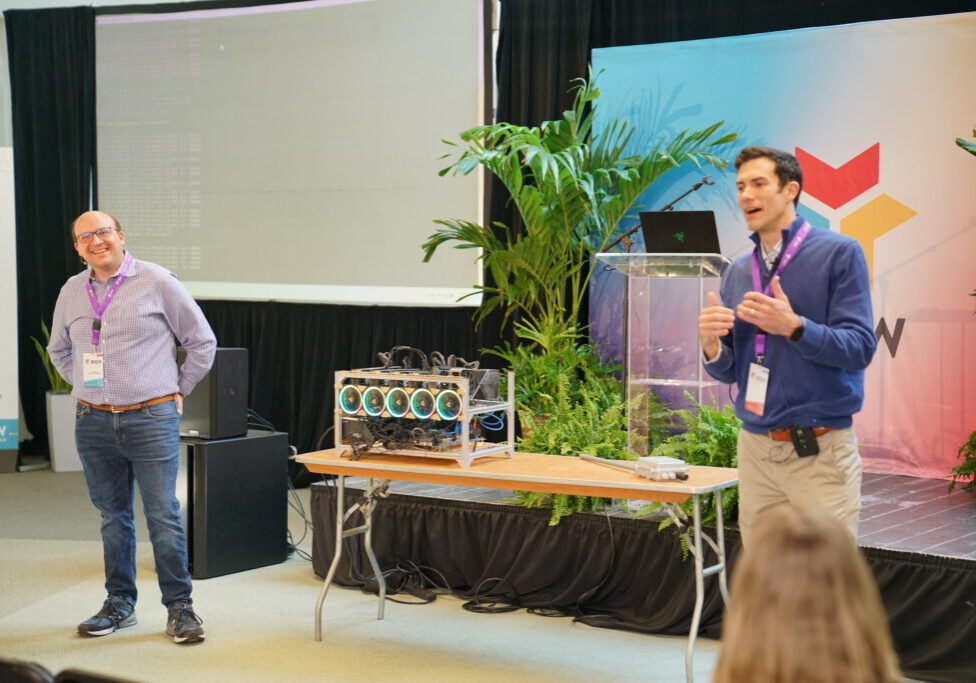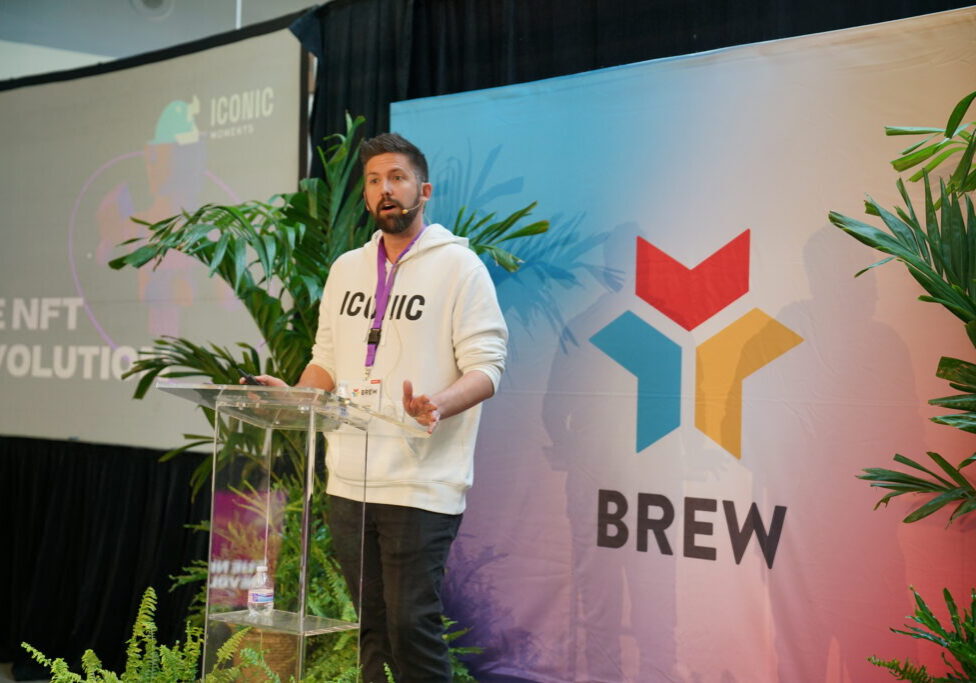Everyone is interested in the possibilities of AI, from entrepreneurs to enterprises. But between technological limitations, security concerns and legal and ethical considerations, there’s still a lot left to be determined, including ownership. AI and IP may be the right combination of tools you need for your creative license, enabling you to innovate and protect your work.
At Baton Rouge Entrepreneurship Week (BREW), we heard from experts in artificial intelligence and intellectual property. They discussed the current environment and what’s in store for the future. Here are some of the takeaways you can apply on your creative journey.
Using AI in Business
In the past, many of the benefits of AI have been limited to large organizations with access to the funding and resources to support its advanced capabilities and requirements. While there are still plenty of options available for enterprises, recent years have seen a growing number of AI platforms and tools that make technology like generative AI more accessible for small businesses and startups.
Generative AI has been around for a while, but it was ChatGPT that marked a major breakthrough in the field. ChatGPT is a large language model (LLM) that uses natural language processing to generate customized replies to a user’s input. LLMs are computer systems designed to learn from large datasets of natural language and then use that data to generate meaningful output.
In a sense, you can think of generative AI as “auto-suggest on steroids,” according to Tyler Durrett, Interactive Director at Rep Cap. You can interact with models and ask questions the same way you would a person, and models can create text, images and more based on your input. “It’s all about context,” he added.
LLMs have many potential applications for businesses, including summarizing large volumes of text, coding, excel formulas, role-playing (such as simulating a sales process) and getting feedback on writing. LLMs also can be used to help people get unstuck when facing writer’s block.
However, there are some areas where LLMs aren’t ideal, according to Durrett. Don’t expect to use these models to generate finished work. They can offer a good starting point, but you’ll still need to make the finishing touches. You also shouldn’t use LLMs for research or finding facts. Models can “hallucinate,” or generate incorrect information.
It’s a good idea to create an AI policy for employees, outlining acceptable and prohibited use of these tools. All employees should be informed about best practices, including checking for plagiarism and not entering sensitive information into the model, which could be used for training data, putting your business security at risk. It’s also important to stay informed about the latest laws and regulations in your region, especially as the legal environment works to catch up to the speed of AI innovation.
Understanding IP Basics
Intellectual property (IP) is any idea that’s conceived and can be made tangible. It includes patents, trademarks, copyrights and trade secrets that are protected by law by granting creators the right to prevent others from using their work without their permission. Intellectual property rights (IPR) are a set of exclusive rights granted to the creators of IP and generally include the right to license, assign and profit from their creations.
Patents can safeguard how an invention works or functions as well as how it’s designed and developed, and they also can be used to protect improvements to existing products. Plant patents exist to protect stains of “asexually reproduced flowering plants, fruit trees and other hybrid plants.” Trademarks protect the branding of a product or company. They’re recognizable symbols, words or phrases that identify a product or service and differentiate it from competitors.
Copyrights protect the original expression of an idea. This includes literary works, musical compositions and artwork. They grant creators the exclusive right to reproduce, perform and distribute their work. Trade secrets are confidential information that provides a competitive advantage to the person or company that owns it. This includes formulas, processes, designs and other information that isn’t publicly available.
A modern cell phone, for example, could have thousands of different IP components across different types of IP, explained Carmen Lyles-Irving, Primary Patent Examiner and Assistant Outreach Coordinator at the U.S. Patent and Trademark Office (USPTO).
Consider the popular manufacturer, Samsung. The company’s name, along with the name of its Galaxy series of devices, can be trademarked. Patent protection could be secured on a device’s camera, battery, screen and antenna as well as data processing capabilities and semiconductor parts.
The company could “obtain a design patent on the shape of the home button, or the curved bezel, as well as the curved screen of that cellphone,” said Lyles-Irving, adding that copyright protection also could extend to “the software code, the instruction manual or the ringtone of the phone.” Additionally, Samsung could have trade secrets that are closely guarded to help it advance its business.
Will AI Be Protected By IP Law?
As businesses across the country leverage AI tools to create innovative products and services, it’s essential for entrepreneurs to protect their IP. With recent major advances in generative AI technologies, the U.S. Copyright Office has launched an initiative to examine the copyright law and policy issues AI raises.
To address these concerns, the office has issued new registration guidance that outlines how to disclose any content that included AI-generated works submitted for registration, how to update pending applications and how to correct the public record on copyright claims already registered without the required disclosure. The USCO is asking for input regarding generative AI and copyright; the public comment period will be open through Nov. 15, 2023.
Recent and upcoming decisions will have long-term consequences. A U.S. court in Washington, D.C., for example, ruled that a work of art created by AI without any human input can’t be copyrighted under U.S. law.
It’s therefore crucial for entrepreneurs to understand the implications of AI and IP before they embark on their next venture. They must consider the implications of copyright in works created using AI and the risks of copyright infringement if they don’t adequately protect their IP.
Entrepreneurs also should consider taking advantage of the Copyright Office’s resources, such as the new AI and copyright website, to stay informed about the latest developments in AI and IP and to ensure they’re adequately protecting their intellectual property.
Exploring Your AI Opportunities
Generative AI has created a lot of buzz, but it’s just a subset of machine learning, which is only one type of AI. If you don’t have a practical use case for generative AI in your business, you likely can benefit from some form of AI. The potential applications are endless, from providing document summaries or in-depth analysis to automation and product innovation. The best way to take advantage of these opportunities is by researching, experimenting and accessing resources to help guide you on your journey.
As the AI discussion continues, stay up to date on AI-related patent resources from the USPTO and other agencies to make sure you’re protecting relevant work. Look for local support, too, such as the Nexus Louisiana Technology Park, which offers resources for high-tech startups to bring their products and services to market faster and more effectively.
If you’re ready to transform your AI concept into a business reality, it’s time to connect with Nexus Louisiana, which provides the coaching, capital and connections you need to fully realize the benefits of your AI and IP initiatives.




![me 2018[20] me 2018[20]](https://nexusla.org/wp-content/uploads/bb-plugin/cache/me-201820-landscape-1a815f07c33206f1d4befd0eb61b317c-.png)